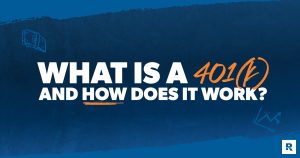Managing your finances effectively doesn’t have to be overwhelming. Financial wellness apps simplify essential money tasks like budgeting and investing, helping you take control of your financial future.
But with so many apps available, how do you know which one to choose? This guide dives into what financial wellness apps are, the features to prioritize, and the best apps to help you achieve financial stability.
What is a financial wellness app?
A financial wellness app serves as a digital tool for improving your overall financial health. These apps offer resources for budgeting, expense tracking, debt management and investing. Some focus on specific goals such as credit score improvement or retirement planning, while others offer a comprehensive approach to money management.
How financial wellness apps work
Most financial wellness apps connect securely to your accounts — such as checking, savings and credit cards — to provide a consolidated view of your finances. By analyzing your transactions and financial habits, these apps offer insights and recommendations to help you make better financial decisions.
Depending on the app, it may provide:
- Automated expense tracking and categorization
- Customized budgeting tools based on your spending habits
- Goal-setting features for savings and debt payoff
- Investment monitoring and management options
These apps use artificial intelligence, machine learning and financial algorithms to deliver tailored advice. This technology helps you stay on top of bills, avoid overspending and work toward long-term financial stability.
Why are financial wellness apps important?
Financial wellness extends beyond basic budgeting — it’s about reducing financial stress and building a secure future. According to a 2024 Bankrate survey, 59 percent of respondents feel stressed about everyday expenses, reporting negative impacts on their mental health.
Financial wellness apps help alleviate this stress by providing:
- Clear visibility into spending patterns and financial habits
- Structured approaches to building emergency savings
- Automated tools for reaching financial goals
- Alerts to help avoid costly mistakes like overdrafts and late payments
Key features to look for in financial wellness apps
With so many apps available, identifying the right features can streamline your decision-making process. Here’s what to look for.
Budgeting tools
Look for apps that simplify budgeting through:
- Automatic categorization of expenses: For example, YNAB groups transactions into categories like groceries, entertainment and utilities, making it easier to track spending.
- Custom budget creation: Using a zero-based budgeting approach, apps like YNAB let you allocate every dollar to a specific purpose. This helps you stick to a plan.
- Spending alerts: PocketGuard notifies you if you’re nearing your budget limit in a specific category, preventing overspending or accidentally overdrafting your account.
Savings goals and automation
Saving money is often easier said than done. Apps that prioritize savings should include:
- Savings goal tracking: Acorns allows you to set multiple savings goals and track your progress toward each one.
- Round-up savings: Apps like Qapital and Acorns automatically round up purchases to the nearest dollar and deposit the difference into a savings or investment account.
- Automated transfers: Digit analyzes your spending habits and transfers small, manageable amounts to savings without manual input.
Debt management
Debt can be a significant barrier to financial wellness. Look for apps that help you:
- Calculate debt payoff plans: For example, Tally provides tools to calculate payoff timelines and interest savings for different repayment strategies.
- Prioritize debt repayment: Look for an app that uses methods like the snowball or avalanche approach to tackle debt efficiently.
- Integrate loan payments: Some apps, such as ChangEd, directly link to your student loans and make payments automatically based on your spending patterns.
Credit score tracking
Your credit score is a key component of your financial health. Some apps provide real-time updates on your credit score, explain changes and offer actionable tips for improvement. Look for features like:
- Credit report monitoring: Credit Karma updates your credit score weekly and alerts you to changes.
- Simulation tools: A tool like Experian Boost lets you see how actions, such as paying down debt, can improve your score.
- Tailored advice: Apps like Credit Sesame offer customized suggestions to build or maintain good credit.
Investment tools
If you’re ready to grow your wealth, investment-focused apps can provide tools for:
- Portfolio analysis: Empower aggregates all your investment accounts and shows how your portfolio performs against benchmarks.
- Automated investing: Wealthfront and Betterment provide robo-advisors that manage your investments based on your risk tolerance.
- Micro-investing options: Acorns allows you to invest spare change, making it easy for beginners to start building wealth.
Robust security
Since financial apps handle sensitive data, security should be a top priority. Ensure the app includes:
- End-to-end encryption: Look for apps that protect data in transit and at rest.
- Two-factor authentication: This extra layer of security ensures that only you can access your account.
- Privacy transparency: Look for an app that details how they use and protect your data, allowing you to make an informed choice.
User-friendly design
A cluttered interface can make financial management daunting. Prioritize apps with clean layouts, intuitive navigation and helpful tutorials or customer support.
Affordability
Many financial wellness apps are free or offer free versions with limited features. Premium apps typically cost between $5 and $15 per month.
Evaluate the app’s features and decide if the cost aligns with the value you’ll receive.
How to choose the right financial wellness app
With so many options on the market, you may find it difficult to choose the right app for your needs. Here are a few tips to narrow your search:
- Identify your financial goals: Are you focused on budgeting, saving, debt management or investing?
- Try free versions or trials: Most apps offer free versions or trials. You can use these to evaluate the interface and features.
- Read reviews: Check app ratings and user feedback for insights into reliability and user experience.
- Prioritize security: Confirm that the app has robust security measures to protect your data.
- Compare costs: Free apps are great for basic needs, but paid options may be worth it for advanced features.
The bottom line
Financial wellness apps serve as powerful tools for improving money management skills and reducing financial stress. By consolidating financial data, offering insights and automating key tasks, these apps make financial literacy more accessible than ever.
Whether you’re budgeting, paying off debt or building savings, there’s an app to fit your needs. Take time to explore options, prioritize security and choose a tool that aligns with your financial goals. Remember that while these apps provide valuable tools, they work best as part of a broader financial strategy.
Frequently asked questions
Read the full article here












